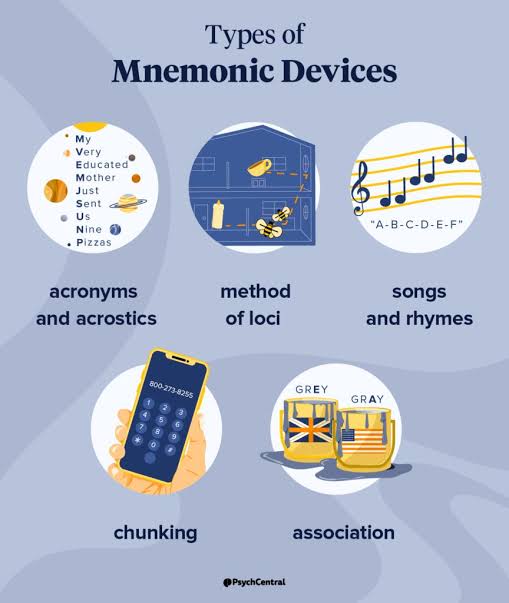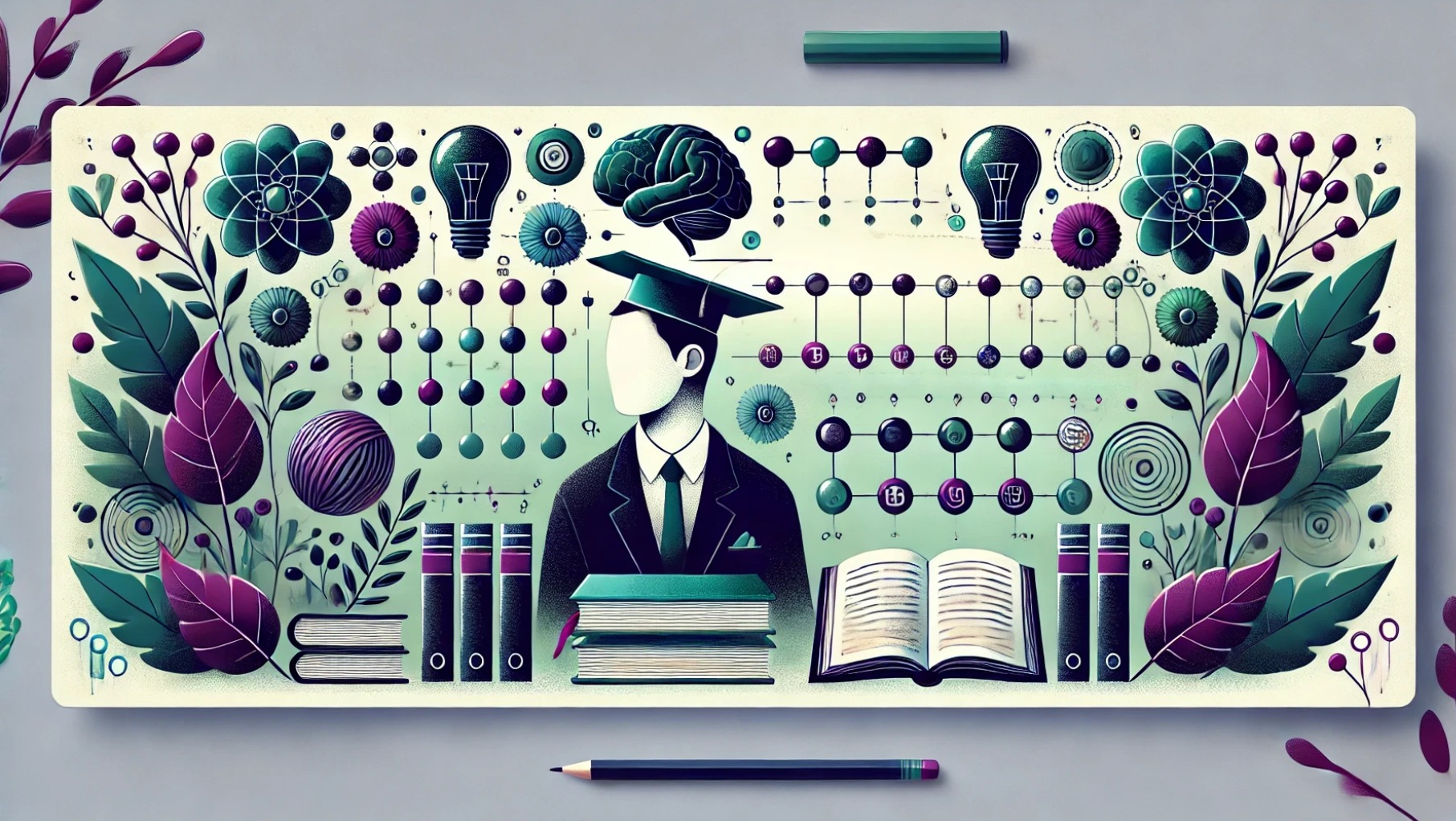If you’ve ever used a rhyme, acronym, or quirky phrase to remember something important, you’ve already experienced the power of mnemonics.
But what exactly are mnemonics, and why do they work so well?
What Are Mnemonics?
At its core, mnemonics are memory aids—tools or techniques designed to make information easier to remember by creating strong associations.
These aids can take the form of acronyms, rhymes, visual images, songs, or even physical gestures.
The term “mnemonic” comes from the Greek word mnemonikos, meaning “relating to memory,” and its roots are tied to Mnemosyne, the Greek goddess of memory.

Whether you’re learning a list of historical dates or the order of planets in the solar system, mnemonics help by turning abstract information into something vivid, meaningful, and memorable.
A Brief History of Mnemonics
Mnemonics date back thousands of years and were widely used in ancient cultures to preserve and transmit knowledge in oral traditions. In ancient Greece, mnemonics were essential for orators and philosophers who had to memorize long speeches and complex ideas.
One of the earliest and most famous mnemonic systems is the method of loci, or the memory palace, which involves associating information with specific locations in a mental map. Cicero, the Roman statesman, used this technique to deliver elaborate speeches without notes.
During the Middle Ages, mnemonics gained popularity among scholars and monks, who used them to remember religious texts and teachings. These techniques continued to evolve, often incorporating rhyme, rhythm, and visual elements to make them even more effective.
The Modern Renaissance: Harry Lorayne and the Memory Revolution
In the 20th century, mnemonics experienced a revival, thanks in large part to Harry Lorayne. Known as “The Yoda of Memory Training,” Lorayne was a magician, author, and memory expert who introduced practical and entertaining approaches to memory improvement. Through his books, lectures, and media appearances, Lorayne brought mnemonics into mainstream consciousness.
Lorayne’s breakthrough came with the publication of his book The Memory Book (1974), co-authored with Jerry Lucas. This bestseller provided accessible, step-by-step guides to mastering memory techniques, including creating visual associations and memory chains. Millions of readers found these methods transformative, using them to remember names, numbers, and even entire speeches.
One of Lorayne’s key innovations was his emphasis on using humor and vivid imagery to create memorable associations.
He showed that mnemonics weren’t just academic tools but practical techniques for everyday life.
Lorayne’s memory demonstrations on television, where he memorized entire phone books or the names of large audiences, cemented his reputation as one of the most influential figures in modern mnemonic history.

The Evolution of Mnemonics
Over time, mnemonics expanded beyond oral traditions to adapt to changing educational needs. With the rise of modern education, they became essential tools for students, professionals, and anyone needing to retain vast amounts of information.
Technological advances have also influenced how we use mnemonics. Today, digital tools and apps allow users to create personalized memory aids, from simple flashcards to sophisticated visual mnemonics like picmonics (picture-based mnemonics).
These modern variations combine the science of memory with engaging visuals, making them particularly effective for visual learners.
How Mnemonics Are Used Today
Mnemonics have found applications in nearly every field, including education, medicine, business, and personal development. Here are some of the most common ways mnemonics are used today:
- Education:
- Students use acronyms like “PEMDAS” (Parentheses, Exponents, Multiplication, Division, Addition, Subtraction) to remember math order of operations.
- History learners rely on rhymes like “In 1492, Columbus sailed the ocean blue.”
- Language Learning:
- Mnemonics help learners remember vocabulary by associating words with similar-sounding phrases or images.
- Medicine:
- Medical students use mnemonics to memorize anatomy, symptoms, and treatment protocols (e.g., “SOAP” for Subjective, Objective, Assessment, Plan in patient notes).
- Business and Work:
- Professionals use mnemonics to remember workflows, processes, or presentation points, often incorporating visual aids for clarity.
- Everyday Life:
- Mnemonics help people recall everything from grocery lists to birthdays, making daily tasks more manageable.

Variations of Mnemonics
Mnemonics come in many forms, each catering to different types of learners:
- Acronyms:
- Words formed from the first letters of a series of terms (e.g., “HOMES” for the Great Lakes: Huron, Ontario, Michigan, Erie, Superior).
- Rhymes and Songs:
- Rhythmic patterns that make facts easier to memorize (e.g., “I before E except after C”).
- Visual Mnemonics:
- Creating vivid mental images or drawings to represent concepts, like using a picture of a bee to remember the Spanish word “abeja.”
- The Method of Loci:
- Associating information with specific locations in a mental map, often referred to as a “memory palace.”
- Chunking:
- Breaking down large amounts of information into smaller, more manageable pieces (e.g., phone numbers).
- Picmonics:
- A modern variation where learners create or use picture-based mnemonics to visualize and remember complex ideas.
Why Mnemonics Are More Relevant Than Ever
In today’s fast-paced, information-rich world, the ability to retain and recall information is a valuable skill. Mnemonics are more than a quirky memory trick—they’re a proven method for boosting productivity, confidence, and learning efficiency. Whether you’re preparing for an exam, mastering a new skill, or simply organizing your thoughts, mnemonics offer a simple yet powerful solution.
Ready to explore the potential of mnemonics for yourself? Start small, experiment with different types, and discover how these timeless tools can transform your memory.
References:
- Clark, R. C., & Lyons, C. (2010). Graphics for learning: Proven guidelines for planning, designing, and evaluating visuals in training materials. Wiley.
- Lorayne, H., & Lucas, J. (1974). The memory book: The classic guide to improving your memory at work, at school, and at play. Ballantine Books.
- Mayer, R. E. (2009). Multimedia learning (2nd ed.). Cambridge University Press.
- Medina, J. (2008). Brain rules: 12 principles for surviving and thriving at work, home, and school. Pear Press.
- Paivio, A. (1990). Mental representations: A dual coding approach. Oxford University Press.
- Willingham, D. T. (2009). Why don’t students like school? A cognitive scientist answers questions about how the mind works and what it means for the classroom. Jossey-Bass.









One response
[…] Mnemonics are memory aids designed to make learning and recall easier by associating information with memorable cues, such as acronyms, rhymes, visual imagery, or storytelling. […]